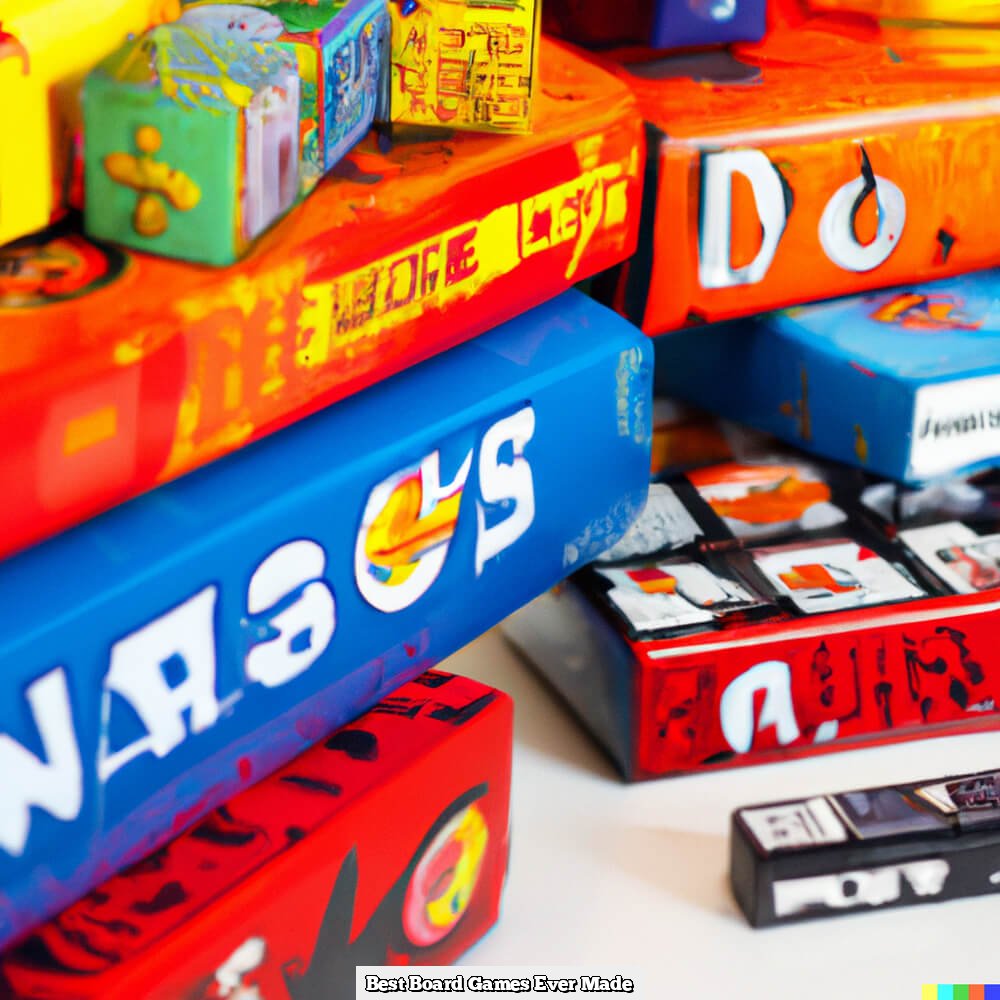Introduction
Board game tokens are a decorative and functional necessity of many of the favorite childhood and adult pastimes. Not only do they have an aesthetic purpose as part of the board game’s design, but they also help players keep track of their progress during play. While some older board games may still use traditional wooden or metal pieces, modern variants can be made out of a wide variety of materials.
Most commonly, board game tokens are composed of plastic or resin. These materials can be dyed in vibrant pigment colors to bring life to the board gaming experience and often possess a glossy sheen, making them pleasing to the eye. Plastic tokens are also strongly resistant to wear and tear, allowing them to withstand prolonged use. The same is true for contemporary designs crafted from polyurethane resin which offer superior strength when compared with more brittle plastics used in earlier models.
In addition to hard material compositions such as plastic and resin, some more creative board games may feature soft rubberized components which give players tactile appeal when rolling dice or completing other mini-game tasks. Highly HD-detailed acrylics have become increasingly popular with all kinds of miniature gaming, often appearing in horror-themed sets for extra authenticity. Gamers looking for even more immersion may be surprised to find tokens made from pewter or sterling silver; these metals add an ever-lasting touch of sophistication while retaining a light weight feel that enhances overall gameplay fluidity.
Regardless of the token material you end up choosing, rest assured that it will deliver on its intended purpose while adding a unique flavor and flair to your board game adventures!
History of Board Game Tokens and the Introduction of Modern Materials
Board game tokens have been used throughout history, although they were not commercially manufactured until the 19th century. Originally, these tokens were made out of a variety of materials including: clay, wood, metal, ivory, stone and glass. These tokens were handcrafted pieces shaped into simple shapes such as circles, hearts or crowns. They were used in various board games as markers for players to denote their position on the board or to represent a piece that took part in the game.
In the 1950’s and 60’s, plastic began to replace many of these original materials as the primary material for making game tokens. This made them increasingly affordable since plastic was cheaper to produce than some of those earlier materials like iron or ivory. Vinyl also entered the market in 1960 and started to be widely used to make board game pieces.
Today, particularly for mass-produced board games, most pieces are injection molded from different types of plastics such as PVC or Polystyrene. Other materials include glass beads and marbles which are used primarily as dice trays instead of actual game pieces. Metal can also still be found token production but this is now limited mainly due to cost issues associated with manufacturing it compared to plastic options.
Common Materials Used for Board Game Pieces, Pros and Cons of Each
1. Wood: These are the classic tokens used in most board games, and whether they’re square or round they add the perfect touch of nostalgia. They too come in many different shapes and sizes, making it easy to customize a board game board with unique pieces. Pros: The wooden tokens are durable, look good and can be painted to create custom pieces for an older look. Cons: They can easily break when dropped and several have sharp edges that may hurt fingers during play.
2. Plastic: A great material for game pieces because not only are they lightweight and sturdy, but they often come in various colors! They also hold details nicely, from corporate logos to pressed letters on dice faces, collectors will surely enjoy the intricate design of plastic pieces. Pros: Easily revamped with some creative house rules or replacement pieces ” plus these tokens are usually inexpensive! Cons: Can easily be lost if not stored properly away from heat or humidity levels as they may warp.
3. Stone: Natural stones as well glass beads bring a unique approach when it comes to game boards as they offer multiple shades of one color per piece without any effort! They also feel lovely in the hands when playing certain tactile games such as chess or go-stones between opponents make it more interesting than using plastic ones would be. Pros: Stones don’t get affected by heat or humidity so you won’t have to worry about them cracking or warping like plastic ones would do; plus these tokens add a very elegant sensation while playing those classic tactical games such as Mancala or Nine Men’s Morris! Cons: Stones can get extremely heavy which might limit storage options for big boards; also glass chips make noise when moving ” some might find this quite annoying during playtime!
Plastic
Most board game tokens are made out of plastic because of its durability and cost-effectiveness. Plastic is a versatile material, making it ideal for creating unique token designs and pieces. Despite being a relatively inexpensive material, plastic can be molded into intricate shapes to accommodate small and large games alike. These shapes range from round marbles or discs to custom 3D figures known as Meeples ” popularized in Carcassonne ” which come in many different sizes and styles. Some such figures are even textured, allowing players to distinguish certain pieces by feel. All these different forms of plastic tokens offer great visual variety on top of their inherent durability, creating a much more immersive gaming experience.
Wood
Board game tokens are most often made out of wood for a vintage aesthetic and superior long-lasting quality. They can be crafted from an array of different woods ranging from pine, which is a softer wood, to bamboo, which is not only beautiful but also robust and hardy. Depending on the game in question, game tokens come in various shapes like dice cubes or miniature replicas of recognisable symbols. Because they’re mostly used throughout multiple rounds at family gatherings, poker nights and even pub quizzes, having quality wooden tokens helps ensure that they will on last as long as possible with minimal wear. Some board games include plain wooden markers such as pieces with one side blackened by ink while the other remains untouched. There are also customisable designs where gamers get to customise their tokens in whatever shape or colour they please. This option provides a deeper sense of personalisation to their gaming experience and encourages sharing of strategies between team members during play.
Clay
Most board game tokens are manufactured from either plastic, metal, or clay. Plastic is often the most popular choice due to its affordability and accessibility. However, for a more stylish and high-end option, many people opt for metallic tokens that come in an array of colors and designs. Clay has grown in popularity over the years as well as offering an elegant alternative to metals and plastics. Many classic board games also feature clay tokens, usually consisting of basic shapes such as circles and various squares or diamonds. On the other hand, some modern board games have gone away from traditional clay and opted instead for ceramic designs that are more intricate and unique than their predecessors. Ceramic tokens come in a huge variety of shapes, sizes, colors, and designs; this allows players to customize their gaming experience with something that will truly stand out on the gaming table.
Metal
Most metal board game tokens are usually made from pewter, a type of metal alloy which is composed of tin, antimony and copper. Pewter provides unmatched durability and is often used for items such as medals, jewelry and figurines. Similarly, metal board game tokens can also be crafted from tin, another metal alloy composed of mostly tin but also includes small percentages of lead or antimony. While tin has similar properties to pewter, it’s lighter weight makes it well-suited for gaming applications when the pieces need to be moved around the board. Some users may find the lighter weight of the tin tokens to be easier to handle than those made from heavier metals such as pewter. Other metals commonly used in board game token production include brass and zinc alloys as well as aluminum. Each offers its own unique characteristics that make it suitable for specific gaming applications!
Cardboard
Today, most board game tokens are made out of cardboard. Cardboard is the most economical but lightweight option due to easy production and low manufacturing costs. This type of token is created in two primary ways: punch-out tokens or game standees. Punch-out tokens are individual pre-die cut shapes that can easily be removed from a card or sheet, such as those found in many traditional mystery style puzzle games. Standee tokens are larger pieces of cardboard folded and scored to create 3D elements such as characters, vehicles or pawns. These are commonly found in real-time strategy games where their shape adds to the overall game experience. For example, military themed boards may come with soldier standees that might be coloured differently on each side to indicate various teams or players. Cardboard game tokens also serve as an economical way to add colour and variation to many popular classic titles without breaking your gaming budget.
Alternative Natural Materials
Most board game tokens are usually made from a variety of different materials. The most common material used is plastic, which is cheap and easy to manufacture. However, the more unique and luxurious games require custom-made pieces that bring more of an authentic feel to the game. As such, many game designers are choosing natural materials like shells and pebbles as their preferred choice for manufacturing tokens. The process starts with sourcing the right type of raw material, which can be harvested sustainably in some parts of the world. After that, they need to be crafted into gaming pieces with intricate patterns and designs. Finally, applying a protective lacquer will provide a smooth finish to ensure your tokens last through years of play. These handcrafted pieces not only add beauty but also add value to the overall gaming experience by making it even more exciting and immersive!
Conclusion
Most board game tokens are made out of a variety of materials, depending on the preference of the designer and the feel desired. Wood, plastic, and metal are among the most popular options for making tokens. Each material has its own benefits. For example, wood offers an attractive look with a natural texture, while plastic gives designers plenty of creative possibilities in terms of shape, size, and color. Metal pieces provide an interesting aesthetic as well as long-lasting durability. Ultimately, finding the perfect combination is all up to personal preference.
Before selecting a token material for your board game design, consider how it will interact with other components like cards or dice. Certain materials may cause scratches or wear on components that are delicate or prone to damage. Also take into account the overall appearance you are aiming for ” if the game has a more retro vibe then wooden tokens may be better suited than metallic pieces; conversely if there’s a mysterious air more fitting of metal elements then go for those instead! Finally don’t forget to factor in cost: while plastic is usually more economical than either wood or metal it doesn’t necessarily provide better quality so choose wisely! Overall when choosing your board game token material combo think about playability & aesthetics before price point – this way you’ll end up with affordable yet eye-catching pieces perfect for your game set-up!

I love playing all kinds of games – from classics like Monopoly to modern favourites like Ticket to Ride.
I created this blog as a way to share my love of board games with others, and provide information on the latest releases and news in the industry.





